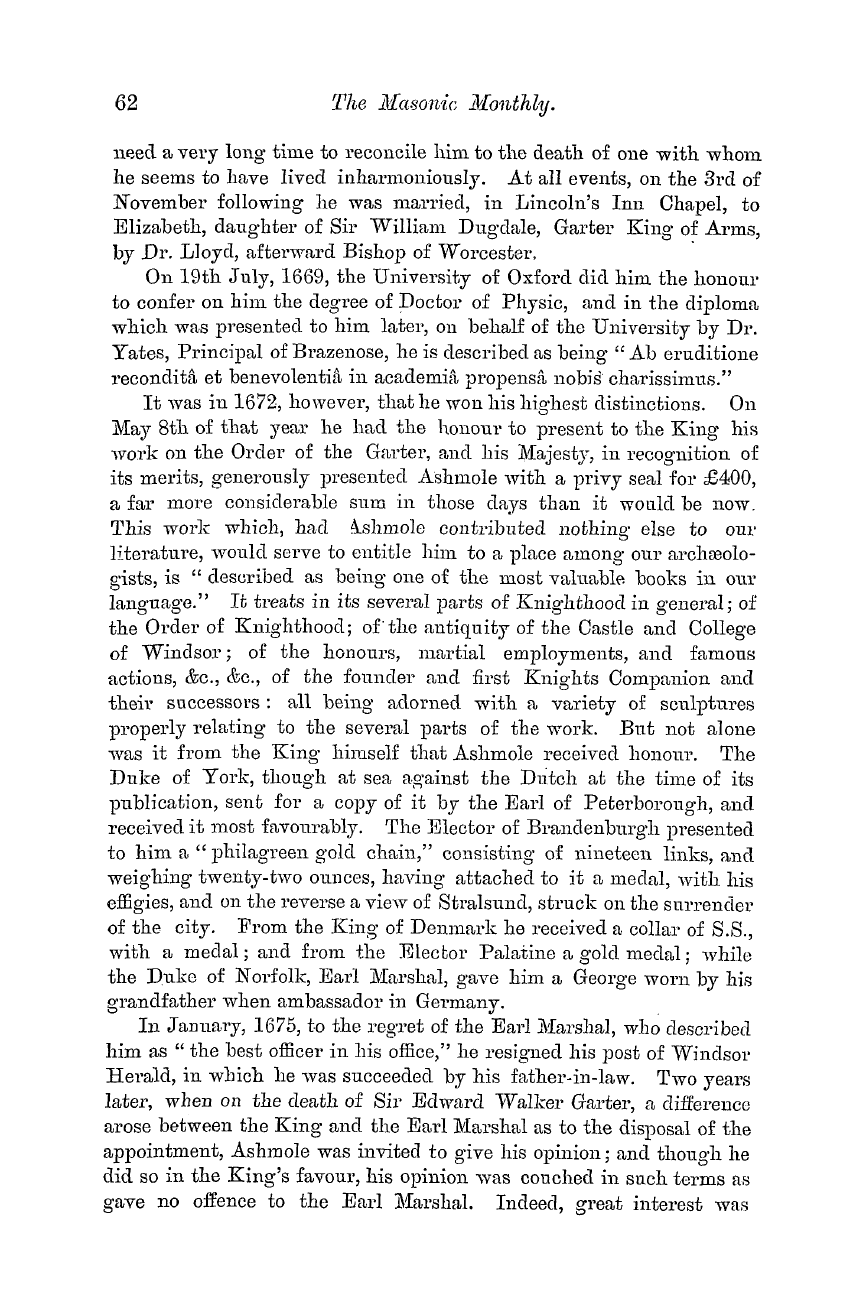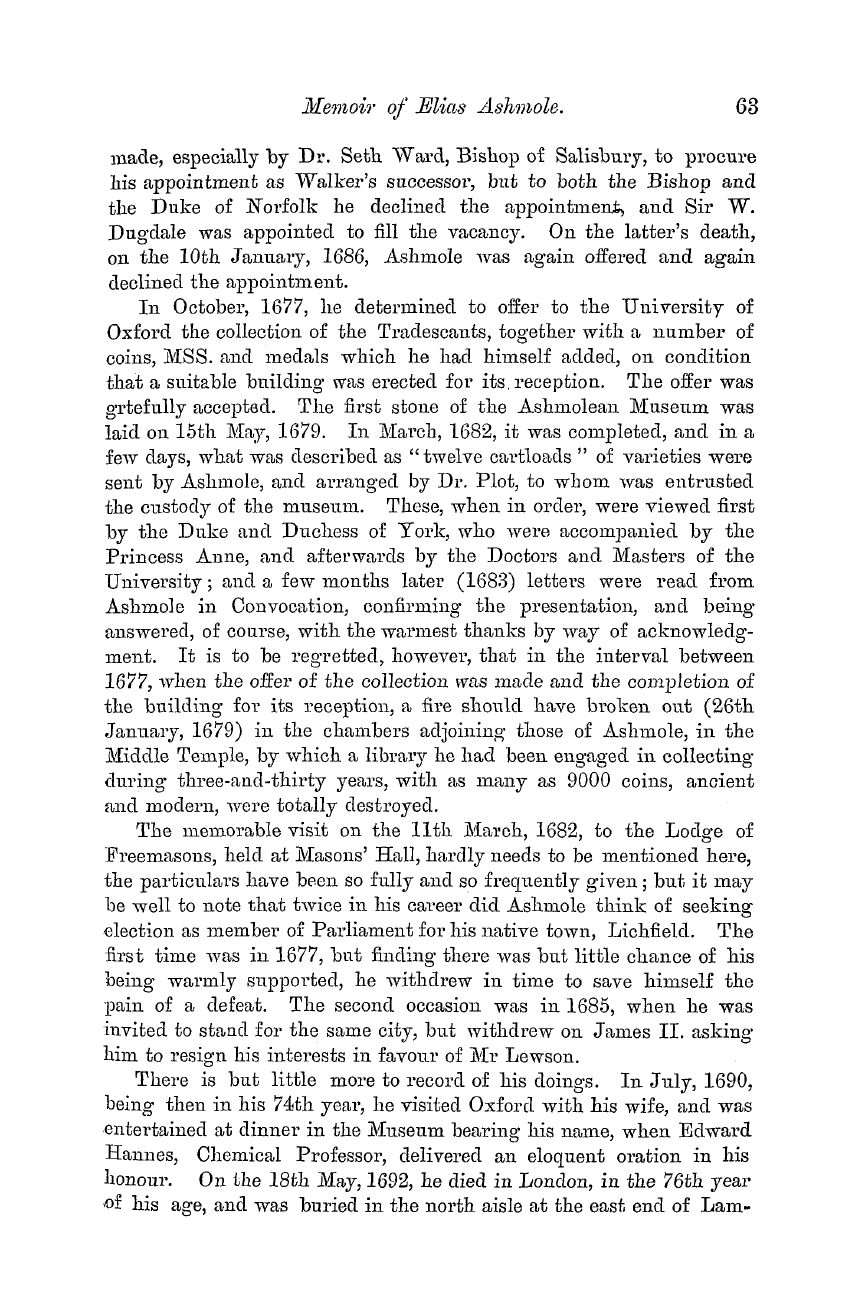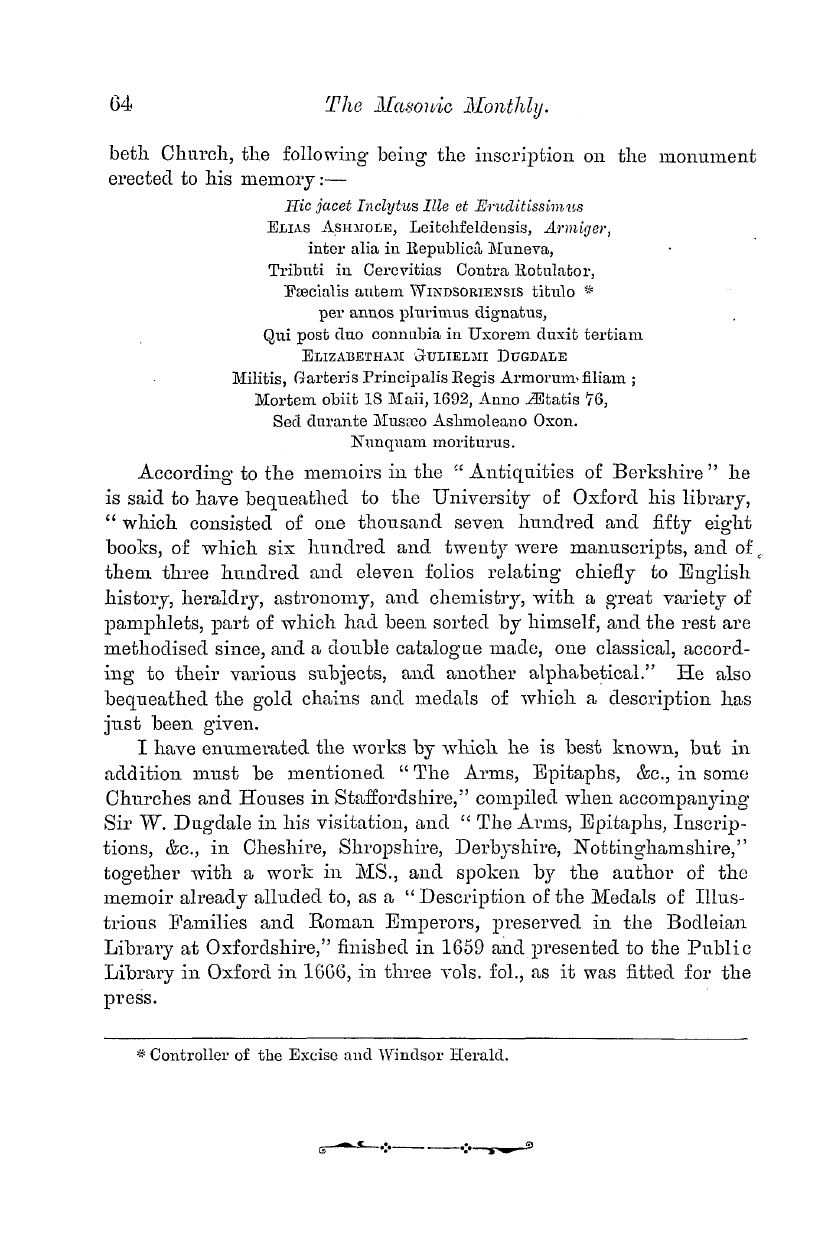-
Articles/Ads
Article ORIGIN OF THE ROYAL ARCH. ← Page 3 of 4 →
Note: This text has been automatically extracted via Optical Character Recognition (OCR) software.
Origin Of The Royal Arch.
abeyance , and a note records : "Lay dormant until 1796 , when it was revived by the officers of the Grand or Royal Chapter . " As an instance of the confusion which prevailed , I may add that in October , 1773 , a constitution was granted to the Bro . Maclean , of whom Bro . Norton speaks , and others , by the name of " The Most Sacred
Lodge or the Chapter of Universality , No . 6 . This Chapter does not appear at all in the printed list of 1790 ; bat in a M . S . note in the records , I find at the No . 6 : " Euphrates Lodge , or Chapter of the Garden of Eden ; " thus indicating , that in all probability , Nos . 2 and 6 had changed places ; the " Most Sacred Lodge . " etc ., of Bro . Mclean
becoming , it may be , the " Caledonian" Chapter , which fills the number in 1790 ? I cannot agree with . Bro . Norton , " that Laurence Dermott was the father of Royal Arch Masonry amongst the Ancients . " This remarkable Masonic administrator , was " admitted " to the degree of
the Royal Arch in Lodge No . 26 , Dublin , in 1746 , the same year in which he served his Mastership . That the degree or grade was worked in Ireland at this period , we already know fi"om Dr . D & ssignj ' s publication ; and the supposition has much to recommend it , that the communication of the secrets of the Royal Arch , was the earliest form in which
any esoteric teaching was specially linked with the incident of Lodge Mastership , or , in other words , that the degree of the Royal Arch was the complement of the Master ' s grade . Out of this was ultimately evolved the degree of Installed Master , a ceremony unknown in the "Modern " system until the first decade of the present century , and of
Avhich I can trace no sign amongst the " Ancients " until the growing practice of conferring the " Arch " upon brethren not legally qualified to receive it , brought about a constructive passing through the chair , Avhich by qualifying candidates not otherwise eligible , naturally entailed the introduction of a ceremony , additional to the simple forms knoAvn to Payne , Anderson , and Desaguliers .
A further reason why the Caledonian Lodge cannot be regarded as having brought over Royal Arch Masonry from the rival camp , is afforded by the fact of William Preston , never having taken this degree . He was closely connected with his mother-lodge for at least several years after 1764 , and from an early period one of its leading members .
The names , indeed , of the brethren who formed the " Grand or Royal Chapter , " forcibly suggest , that the idea of appropriating the degree , emanated from the ruling spirits of the " Modern " Grand Lodge . Lord Blaney , the Grand Master , was " passed to the Royal Arch ' ' in June , 1766 , and officiated as presiding officer of the Chapter in the following July , on which latter occasion Bro . Heseltine ( afterwards Grand Secretary ) was " exalted . "
Note: This text has been automatically extracted via Optical Character Recognition (OCR) software.
Origin Of The Royal Arch.
abeyance , and a note records : "Lay dormant until 1796 , when it was revived by the officers of the Grand or Royal Chapter . " As an instance of the confusion which prevailed , I may add that in October , 1773 , a constitution was granted to the Bro . Maclean , of whom Bro . Norton speaks , and others , by the name of " The Most Sacred
Lodge or the Chapter of Universality , No . 6 . This Chapter does not appear at all in the printed list of 1790 ; bat in a M . S . note in the records , I find at the No . 6 : " Euphrates Lodge , or Chapter of the Garden of Eden ; " thus indicating , that in all probability , Nos . 2 and 6 had changed places ; the " Most Sacred Lodge . " etc ., of Bro . Mclean
becoming , it may be , the " Caledonian" Chapter , which fills the number in 1790 ? I cannot agree with . Bro . Norton , " that Laurence Dermott was the father of Royal Arch Masonry amongst the Ancients . " This remarkable Masonic administrator , was " admitted " to the degree of
the Royal Arch in Lodge No . 26 , Dublin , in 1746 , the same year in which he served his Mastership . That the degree or grade was worked in Ireland at this period , we already know fi"om Dr . D & ssignj ' s publication ; and the supposition has much to recommend it , that the communication of the secrets of the Royal Arch , was the earliest form in which
any esoteric teaching was specially linked with the incident of Lodge Mastership , or , in other words , that the degree of the Royal Arch was the complement of the Master ' s grade . Out of this was ultimately evolved the degree of Installed Master , a ceremony unknown in the "Modern " system until the first decade of the present century , and of
Avhich I can trace no sign amongst the " Ancients " until the growing practice of conferring the " Arch " upon brethren not legally qualified to receive it , brought about a constructive passing through the chair , Avhich by qualifying candidates not otherwise eligible , naturally entailed the introduction of a ceremony , additional to the simple forms knoAvn to Payne , Anderson , and Desaguliers .
A further reason why the Caledonian Lodge cannot be regarded as having brought over Royal Arch Masonry from the rival camp , is afforded by the fact of William Preston , never having taken this degree . He was closely connected with his mother-lodge for at least several years after 1764 , and from an early period one of its leading members .
The names , indeed , of the brethren who formed the " Grand or Royal Chapter , " forcibly suggest , that the idea of appropriating the degree , emanated from the ruling spirits of the " Modern " Grand Lodge . Lord Blaney , the Grand Master , was " passed to the Royal Arch ' ' in June , 1766 , and officiated as presiding officer of the Chapter in the following July , on which latter occasion Bro . Heseltine ( afterwards Grand Secretary ) was " exalted . "

































































